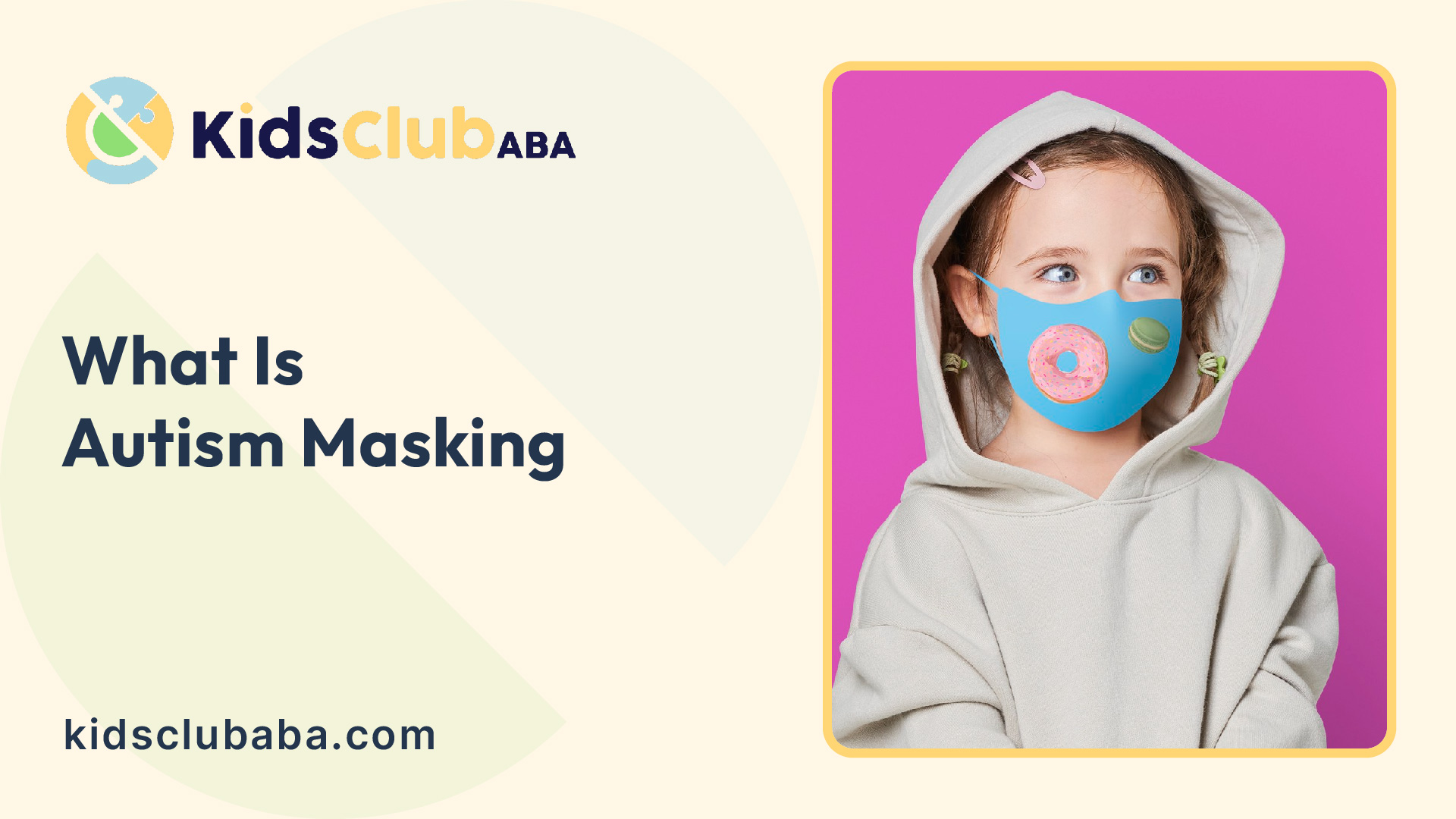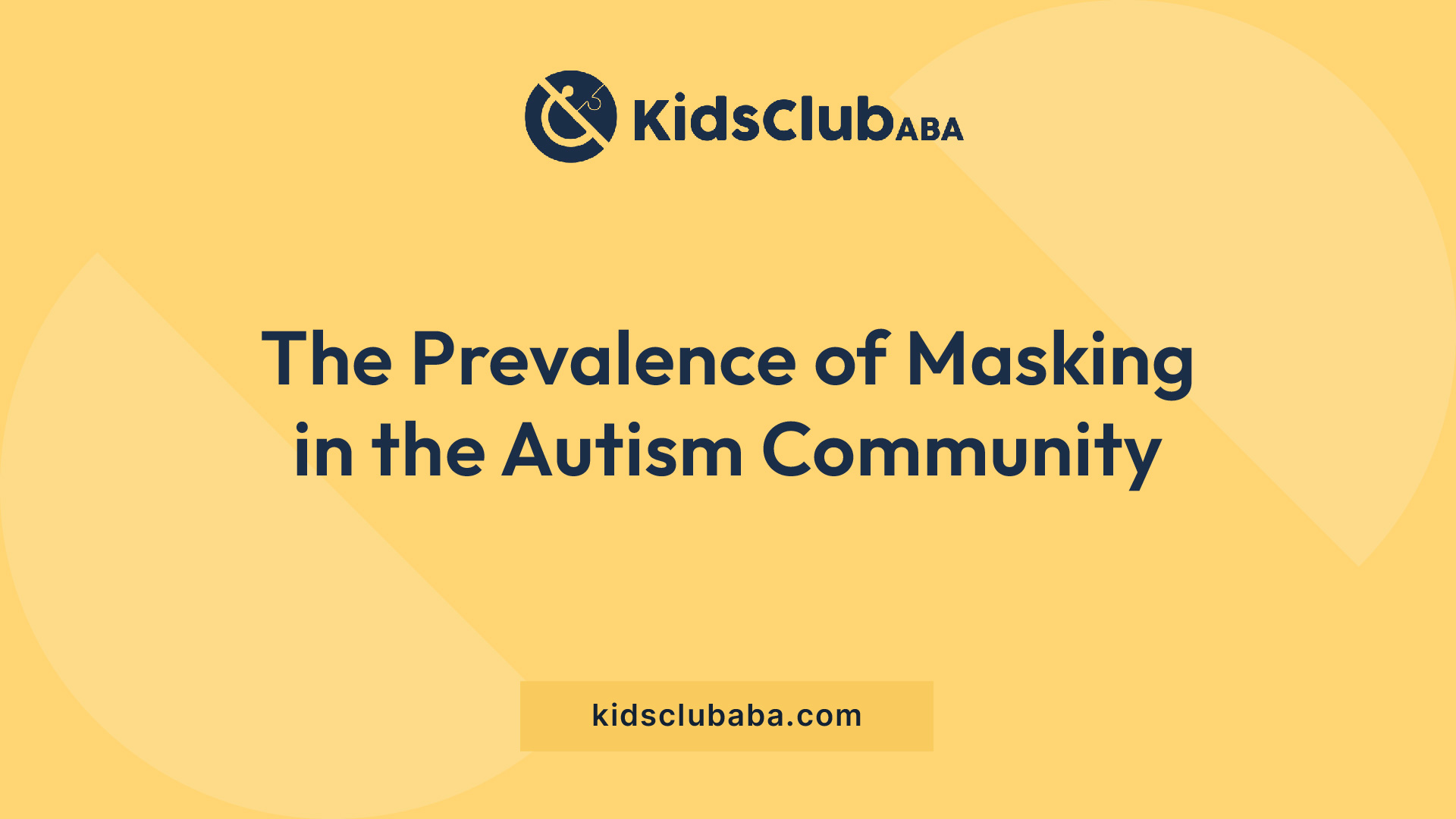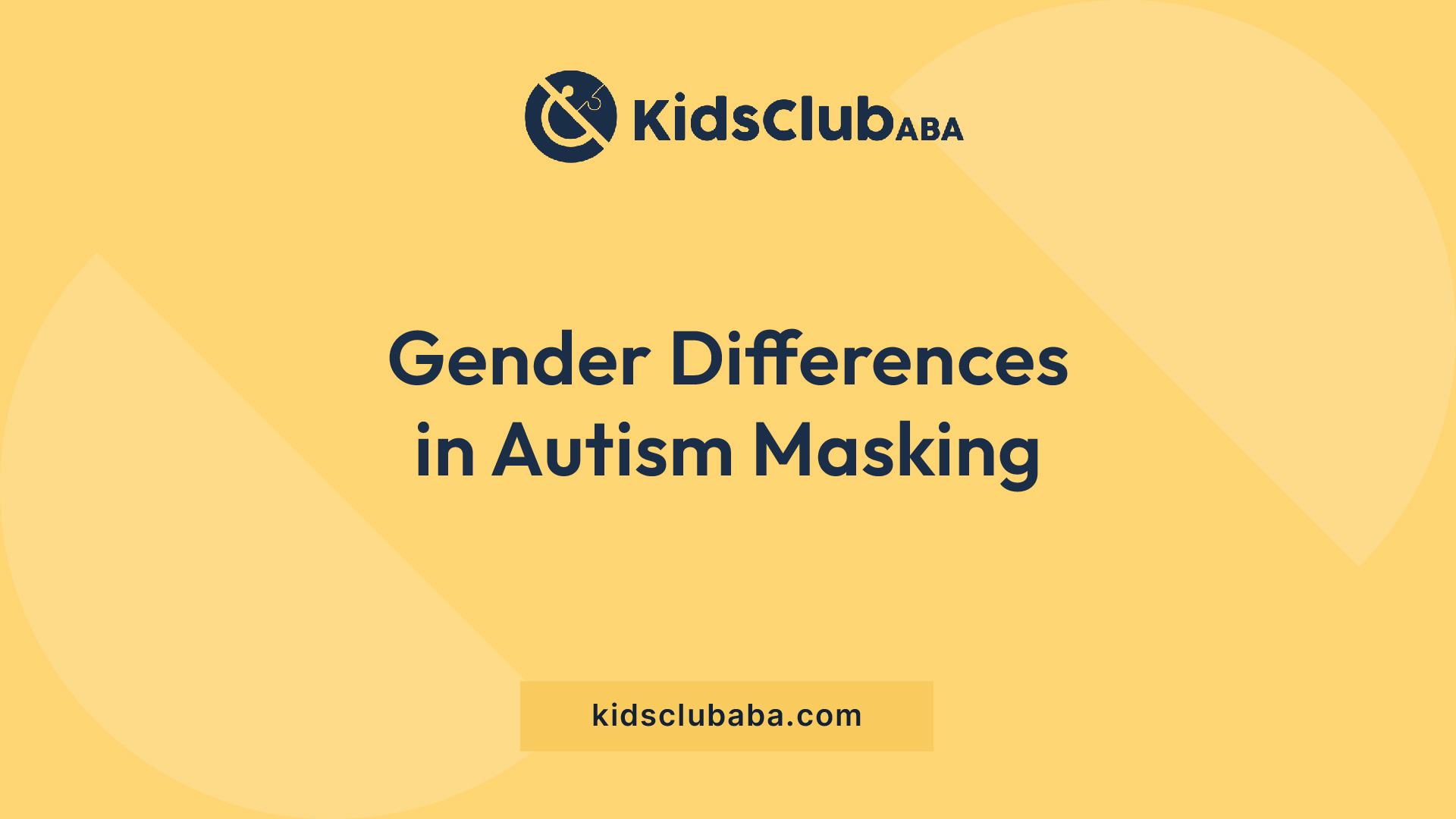 Introduction: The Invisible Adaptation
Introduction: The Invisible Adaptation
When most people think about autism spectrum disorder (ASD), they often picture obvious behavioral characteristics—perhaps stimming movements, direct communication styles, or intense focus on specific topics. What remains largely invisible to the public eye is a phenomenon known as “autism masking” or “camouflaging”—the conscious or unconscious suppression of natural autistic traits to conform to social expectations.
Research indicates this phenomenon is remarkably common, with studies suggesting that up to 70-80% of autistic individuals engage in some form of masking. This practice has profound implications for diagnosis, mental health, identity, and quality of life for millions of people on the autism spectrum.
This comprehensive guide explores what autism masking is, why it occurs, its impacts, how it presents differently across demographics, and strategies for achieving a healthier balance between authentic expression and social navigation.
What Exactly Is Autism Masking?
Definition and Core Components
Autism masking (also called camouflaging or compensation) refers to the process where individuals with autism consciously or unconsciously hide, suppress, or modify their autistic traits to appear more neurotypical in social situations. A 2019 study in the Journal of Autism and Developmental Disorders defined masking as “the difference between how people appear in social contexts and what’s happening to them on the inside.”
Masking typically involves several components:
1. Suppression of Natural Behaviors
- Restricting or controlling stimming motions (repetitive self-stimulatory behaviors)
- Hiding intense interests or passions
- Forcing eye contact despite discomfort
- Suppressing sensory reactions to overwhelming stimuli
2. Imitation and Performance
- Carefully observing and copying others’ social behaviors
- Memorizing appropriate phrases for different social situations
- Practicing facial expressions and gestures in private
- Developing scripts for common social scenarios
3. Compensation Strategies
- Using intellectual analysis to navigate social situations rather than intuition
- Developing elaborate systems to remember social rules
- Creating workarounds for executive functioning challenges
- Using humor or other techniques to deflect from social mistakes
Research published in The Lancet Psychiatry indicates that masking occurs across the autism spectrum, regardless of intellectual ability or language skills, though the specific techniques and level of awareness vary widely between individuals.

The Prevalence of Masking in the Autism Community
Statistics and Demographic Patterns
Masking is remarkably common among autistic individuals, though research shows interesting demographic patterns:
- Studies indicate approximately 70-80% of autistic people report engaging in deliberate masking behaviors
- Research from the University College London found that autistic women score significantly higher on measures of camouflaging than autistic men
- A 2020 study found that 62% of late-diagnosed autistic adults identified masking as a primary reason for their delayed diagnosis
- Approximately 40% of autistic individuals report masking in nearly all social situations outside their homes
The true prevalence may be even higher, as many individuals mask without conscious awareness of doing so, having internalized these behaviors from an early age as simply “how to behave.”
Why Do Autistic People Mask?
Understanding the motivations behind masking is crucial for developing support strategies:
Social Acceptance and Connection
The most commonly reported reason for masking is the basic human desire for social acceptance:
- 87% of autistic individuals in one study reported masking to “fit in” with peers
- 81% indicated they mask to avoid rejection or ostracism
- 72% reported masking specifically to form friendships
- 65% mask to maintain existing relationships
As one autistic adult explained in a research interview: “It’s exhausting to constantly calculate what natural social instinct should have told me to do… but the alternative is rejection and isolation.”
Safety and Harm Prevention
Many individuals mask as a protective mechanism:
- 78% of autistic adults report masking to avoid bullying or mockery
- 63% mask to prevent discrimination in employment settings
- 58% report masking to navigate educational environments safely
- Research indicates autistic individuals who display more visible traits experience 34% more bullying than those who effectively mask
Access to Opportunities
Masking is often necessary to access important life opportunities:
- 76% of employed autistic adults report masking in workplace settings
- 65% indicate masking during job interviews specifically
- 72% of autistic college students report masking in educational environments
- 68% report masking to access healthcare more effectively
Internalized Stigma
Many individuals mask due to internalized negative messages about autism:
- 54% report masking due to shame about their autistic traits
- 47% indicate masking stems from trying to “overcome” their autism
- 62% report receiving explicit messages from others that their natural behaviors were inappropriate
- 70% had been specifically taught to suppress certain autistic behaviors by well-meaning parents, teachers, or therapists

Gender Differences in Autism Masking
The Female Autism Phenotype
One of the most consistent findings in masking research is significant gender differences in both the prevalence and presentation of masking:
- Studies show autistic women/girls score 20-40% higher on masking measures than autistic men/boys
- Research indicates 80% of autistic girls demonstrate advanced masking skills by adolescence
- Late diagnosis is more common in females, with women being diagnosed an average of 5-6 years later than men
- The “female autism phenotype” often features sophisticated masking as a core characteristic
Factors contributing to these differences may include:
- Higher social expectations placed on girls from an early age
- More severe social consequences for girls who violate social norms
- Greater emphasis on relational aggression in female peer groups
- Potentially different neurological factors affecting social motivation
As summarized by Dr. William Mandy, a leading researcher in this area: “The current diagnostic criteria are based on the traditional male presentation of autism, and many clinicians remain unaware of how autism may present differently in females, with masking being one of the key distinguishing factors.”
The Costs of Masking: Mental Health and Identity
The Exhaustion Factor
Masking exacts significant costs, with research increasingly documenting its impact on mental health:
- 92% of autistic individuals report masking as “exhausting” or “extremely exhausting”
- 82% indicate they cannot maintain masking for extended periods without negative effects
- 64% report needing significant recovery time after social events involving masking
- Studies show increased physiological stress markers (cortisol levels) in autistic individuals during social masking compared to authentic expression
Mental Health Impacts
The correlation between masking and adverse mental health outcomes is strongly established:
- Research published in the Journal of Autism and Developmental Disorders found that higher masking scores predicted significantly increased depression and anxiety
- A 2020 study found that autistic adults who report high levels of masking are 3 times more likely to experience suicidal thoughts
- 71% of autistic adults report masking contributes directly to their anxiety
- 65% indicate masking worsens their depression
- 58% associate masking with identity confusion and poor self-image
Dr. Camilla Pang, an autistic scientist and author, describes the experience: “Masking is like holding your breath underwater; you can do it for a while, but eventually, you need air. For us, dropping the mask is that breath—essential, not optional.”
Identity Development and Authenticity
Beyond immediate mental health impacts, masking affects deeper aspects of identity:
- 68% of autistic adults report that years of masking left them uncertain about their “true self”
- 72% indicate masking interferes with forming authentic relationships
- 54% report difficulty “turning off” masking behaviors even in safe environments
- 76% associate long-term masking with a sense of lost identity
This identity confusion is particularly pronounced in late-diagnosed individuals, who often report experiencing a significant identity recalibration after discovering their autism.
Recognizing Masking in Different Contexts
Childhood and Educational Settings
Masking in children often presents differently than in adults:
- Appearing to have friends but actually being peripheral to social groups
- “Holding it together” at school but experiencing meltdowns at home
- Mirroring peer behaviors without genuine social connection
- Developing intense interests in socially acceptable topics
- Creating elaborate fantasy worlds as escape mechanisms
- Meticulous adherence to rules to avoid standing out
Research indicates approximately 45% of autistic children demonstrate significant masking by age 8, with this percentage increasing to 70% by adolescence.
Workplace Masking
Adults often develop sophisticated masking specific to professional environments:
- Creating scripts for common workplace interactions
- Taking extensive notes on unwritten social rules
- Using lunch breaks or bathroom visits for sensory regulation
- Developing explanations for autistic traits that colleagues find more acceptable
- Overcompensating through perfectionism or workaholism
- Carefully managing energy to prevent workplace meltdowns
A 2019 survey found that 83% of employed autistic adults reported masking at work daily, with 57% indicating they couldn’t maintain their jobs without masking.
Social and Relationship Contexts
Masking in social relationships presents unique challenges:
- Presenting different personas in different social contexts
- Extreme preparation before social events
- Carefully monitoring conversations for appropriate reciprocity
- Analyzing past social interactions for extended periods
- Using alcohol or other substances to reduce masking effort
- Limiting social engagement to prevent masking burnout
Identifying Masking: Signs and Indicators
Understanding the signs of masking can help identify autistic individuals who might otherwise go unrecognized:
Self-Identification Questions
These questions can help individuals explore whether they might be masking:
- Do you feel substantially more exhausted after social interactions than others seem to?
- Do you consciously monitor your body language, eye contact, or expressions?
- Do you rehearse or script conversations before having them?
- Do you feel like you’re “performing” rather than naturally being yourself in social situations?
- Are you a different person depending on who you’re with?
- Do you study others’ behavior to figure out what’s “normal”?
- Do you experience “crashes” or shutdowns after socializing?
- Have people expressed surprise upon learning personal things about you because you “don’t seem autistic”?
Observable Indicators
For parents, partners, or clinicians, these patterns may suggest masking:
- Noticeable inconsistency in social abilities across different contexts
- Delayed onset of obvious autistic traits when comfortable or tired
- Excellent imitation skills but difficulty with genuine social reciprocity
- Social interactions that seem learned or rehearsed rather than intuitive
- Extreme exhaustion after social events despite seeming to function well
- Different behavior when alone versus in company
- High anxiety about “getting things wrong” socially
As one parent described: “My daughter seemed fine at school—her teachers were shocked when I described her meltdowns at home. She was spending every ounce of energy holding herself together all day, then completely fell apart in her safe space with us.”
Masking and Diagnosis: The Hidden Barrier
Diagnostic Challenges
Masking significantly impacts the diagnostic process:
- Studies show clinicians are 50% less likely to diagnose autism in individuals who demonstrate effective masking
- Research indicates a 2-3 year diagnostic delay on average for highly masking individuals
- Approximately 38% of late-diagnosed adults report having previous misdiagnoses
- Women with strong masking abilities receive diagnoses an average of 5-6 years later than male counterparts
Common misdiagnoses in masking individuals include:
- Anxiety disorders
- Depression
- Borderline personality disorder
- Obsessive-compulsive disorder
- Eating disorders
- ADHD
The Late Diagnosis Experience
The growing recognition of masking has contributed to increasing rates of adult autism diagnosis:
- Referrals for adult autism assessment increased by approximately 290% between 2010 and 2020
- Studies indicate 60-70% of adults seeking autism assessment report lifelong masking
- The average age of diagnosis for highly masking individuals is 31-36 years
- 85% of late-diagnosed adults report significant masking as a factor in their delayed identification
Finding Balance: Reducing Harmful Masking
Selective Authenticity
Most experts recommend a balanced approach rather than eliminating all masking:
- Identifying safe relationships and environments for authentic expression
- Distinguishing between harmful masking and useful social adaptation
- Creating designated recovery time after masking-heavy activities
- Gradually expanding authentic expression in trusted relationships
As autism researcher Dr. Kajsa Igelström notes, “The goal isn’t necessarily to stop all masking—some aspects of modifying behavior are part of any social interaction. The goal is conscious choice about when, where, and how much to mask, rather than compulsive masking driven by fear or shame.”
Creating Safe Environments
For families, educators, and employers, creating environments that reduce the need for masking is crucial:
- Explicitly accepting stimming and other autistic self-regulation
- Providing clear, direct communication and expectations
- Offering sensory accommodations proactively
- Creating low-demand social opportunities
- Respecting need for recovery time
- Emphasizing authentic connection over social performance
Professional Support
Therapeutic approaches are increasingly addressing masking:
- Acceptance and Commitment Therapy (ACT) to address masking-related anxiety
- Identity exploration for reconnecting with authentic self
- Sensory integration therapy for better regulation without masking
- Strategic disclosure coaching for navigating when and how to disclose autism
- Autistic peer support groups for sharing masking experiences and strategies
The Future: Toward a More Accepting Society
Changing Perspectives
The ultimate solution to harmful masking lies in greater societal acceptance of neurological diversity:
- Education about autistic communication and interaction styles
- Workplace policies that accommodate different neurotypes
- Media representations showing authentic autism beyond stereotypes
- Recognition of masking as a stress response rather than a skill to cultivate
- Valuing neurodivergent perspectives and contributions
Research indicates exposure to accurate information about autism reduces stigma by approximately 35%, suggesting that education is a powerful tool for creating more accepting environments.
Conclusion: The Balance of Authenticity and Adaptation
Autism masking represents a complex adaptation to a world not designed for neurodivergent minds. While some level of social adaptation is part of all human interaction, the degree and cost of masking often required of autistic individuals goes far beyond reasonable accommodation.
As society gradually moves toward greater understanding and acceptance of neurological differences, the hope is that autistic individuals will feel less pressure to hide their natural traits and will instead be valued for their authentic selves.
For autistic individuals currently navigating the complex balance between authenticity and social functioning, the key messages from current research are:
- You’re not alone in this experience—masking is extremely common
- Your authentic self has value, even when it doesn’t match social expectations
- Selective authenticity may be more sustainable than complete masking or completely unfiltered expression
- Finding your community of accepting people reduces the need for exhausting masking
- Your well-being matters and should be prioritized over others’ comfort with difference
As one autistic self-advocate eloquently stated: “The goal isn’t to eliminate all masking—it’s to reach a point where masking becomes a choice rather than a survival mechanism.”
